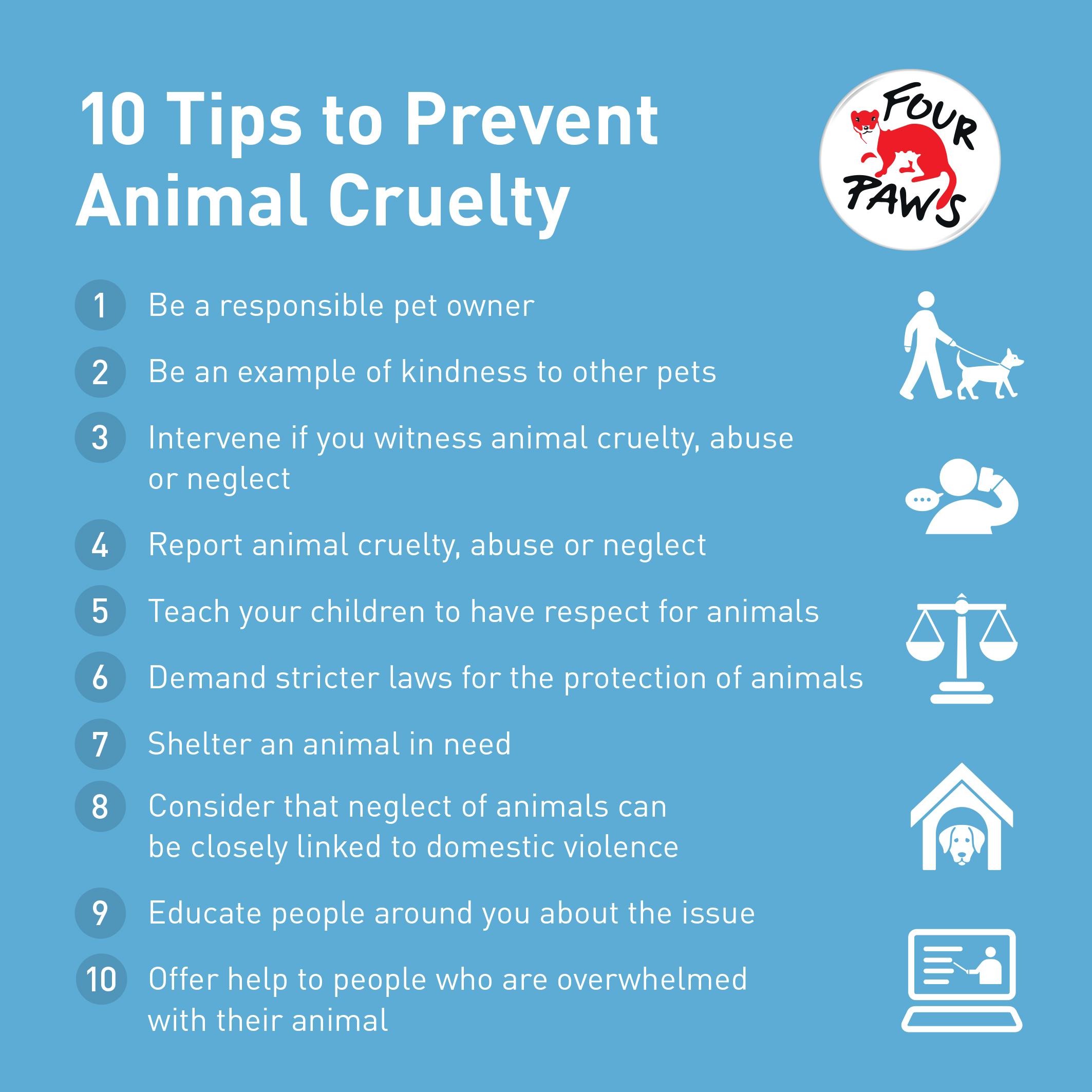Animals share our planet; their existence is interwoven into the rich tapestry of life. However, the insidious presence of cruelty against these beings remains an ever-pertinent issue. Preventing cruelty to animals doesn’t solely hinge on legislative changes or large-scale activism; it also roots itself deeply in our everyday lives. The most compelling element lies in the subtle alterations we can embrace in our daily routines, ideas, and interactions. This exploration seeks to illuminate practical measures you can take—small but formidable actions—that will usher in an enlightening shift in how we regard and treat our fellow inhabitants on Earth.
First and foremost, awareness is pivotal. A mere glance at the myriad of atrocities faced by animals can invoke a plethora of emotions ranging from anger to sorrow. Yet, therein lies a daunting challenge: detachment. Many people exist in a bubble of ignorance, blissfully unaware of the abuses that animals endure in industries such as factory farming, entertainment, and testing. To incite change, one must first absorb the reality. Engage with documentaries, literature, and reports highlighting animal welfare issues. This knowledge equips you to foster understanding and empathy, both in yourself and those around you.
Once awareness is cultivated, the next step is transformation of consumer habits. Every dollar spent is a vote for the kind of world we wish to inhabit. Eschewing products that exploit animals is paramount. This includes not only food but also clothing, cosmetics, and entertainment. Opt for cruelty-free brands that align with humane values. Whether you choose plant-based alternatives or support local sanctuaries, your choices resonate beyond mere purchases. They convey a commitment to a compassionate existence, allowing industries that perpetuate suffering to wither.
Moreover, one transformative approach to counteract animal cruelty is simply to adopt the notion of empathy in our everyday interactions. When faced with the plight of an abandoned pet on the street or an injured animal, an empathetic response can dictate the course of their lives. Rather than turning away, extend a hand, and offer assistance. Create a network of support that seeks out local shelters or rescues requiring volunteers or foster homes. By embodying empathy, you essentially stitch a fabric of care and consideration that binds the community together, advocating for those who cannot voice their suffering.
Education is another avenue that cannot be overlooked. As you educate yourself, disseminate this knowledge to foster a culture of compassion among your peers. Organize workshops or community discussions focused on animal welfare. Schools can incorporate animal rights discussions into their curriculum, instilling a sense of responsibility and advocacy in the next generation. When children and adolescents understand the importance of treating animals with respect, it cultivates a generation that prioritizes kindness and justice, effectively reducing cruelty.
Furthermore, consider the role of legislation in the prevention of animal cruelty. Many regions have laws designed to protect animals, yet enforcement is often lacking. Become active in local advocacy groups or attend town hall meetings to voice your concerns on animal welfare legislation. Lobby for stronger laws that ensure protection and humane treatment for all animals. When communities rally together for a cause, their collective voices can lead to significant changes in policy and funding for animal protection.
On a digital frontier, the power of social media cannot be overlooked. Platforms like Facebook, Twitter, and Instagram have become megaphones for advocacy, giving a voice to the voiceless. Utilize these channels not just to share cute animal pictures or rescue stories but to educate and promote responsible behavior towards animals. Create dynamic content that spreads awareness about animal rights events, rescue operations, and critical issues surrounding cruelty. Engaging in conversations about animal welfare online amplifies its urgency, turning passive observers into active participants.
In our increasingly interconnected world, we must also bear in mind the global implications of animal cruelty. Practices such as dog fighting, illegal wildlife trade, and poaching are not confined to local areas—they are global issues that demand worldwide attention. By aligning with international organizations dedicated to fighting animal cruelty, you amplify your impact. Join campaigns that work towards the abolition of practices like animal testing or support initiatives that advocate for the preservation of endangered species. Global activism can encourage local change, fostering an expansive movement for animal rights.
Lastly, let us not underestimate the power of connection with nature. Developing a relationship with the environment and its inhabitants often fosters a deeply rooted respect for all living beings. Spend time outdoors, observe wildlife, and appreciate the intricate ecosystems at play. Whether it’s volunteering at a wildlife rehabilitation center or simply enjoying a hike, these experiences can imbue you with a profound sense of responsibility towards the creatures that share our planet. By forging personal connections with nature, the value of preserving animal life becomes not just an abstract idea but a deeply felt imperative.
In conclusion, preventing cruelty against animals requires intentional action in our daily lives. The transformation begins with awareness and is nurtured through conscious consumer choices, community engagement, and education. Through empathy, advocacy, digital activism, and personal connection, each one of us has the potential to ignite change. By shifting perspectives and cultivating compassion, we pave the way for a brighter future—one wherein cruelty is but a distant memory, and kindness prevails. Every small act counts, leading to a collective movement that promotes the welfare of all living beings.






